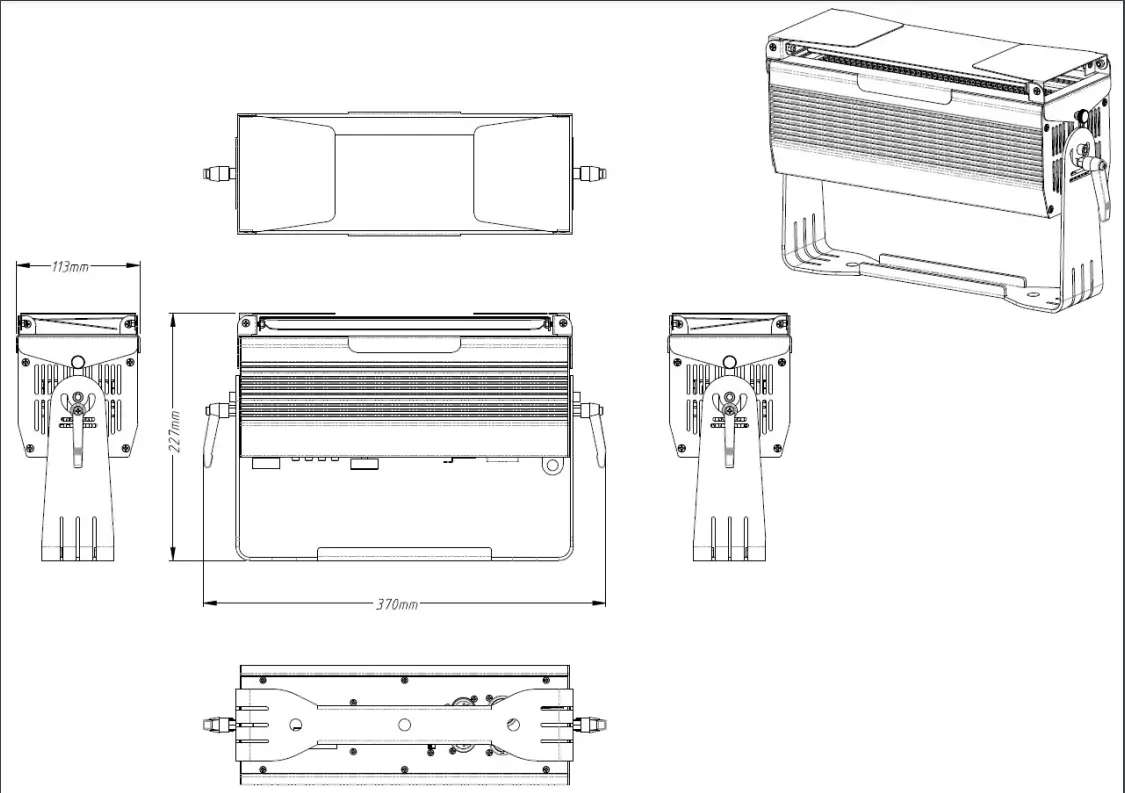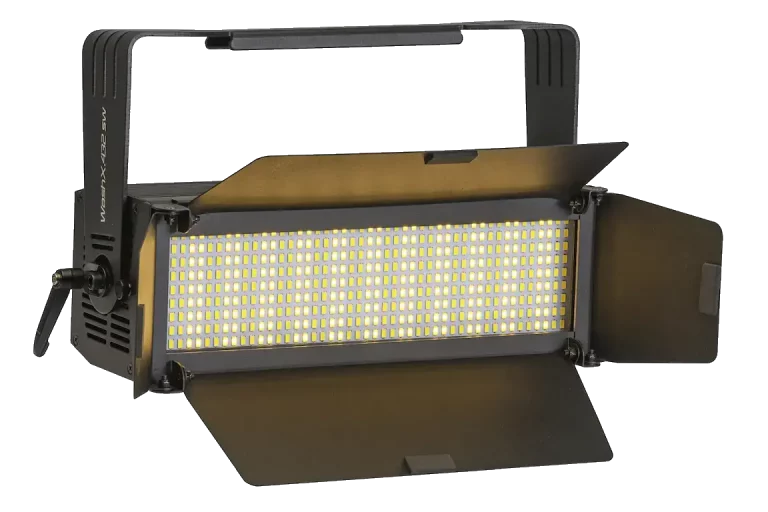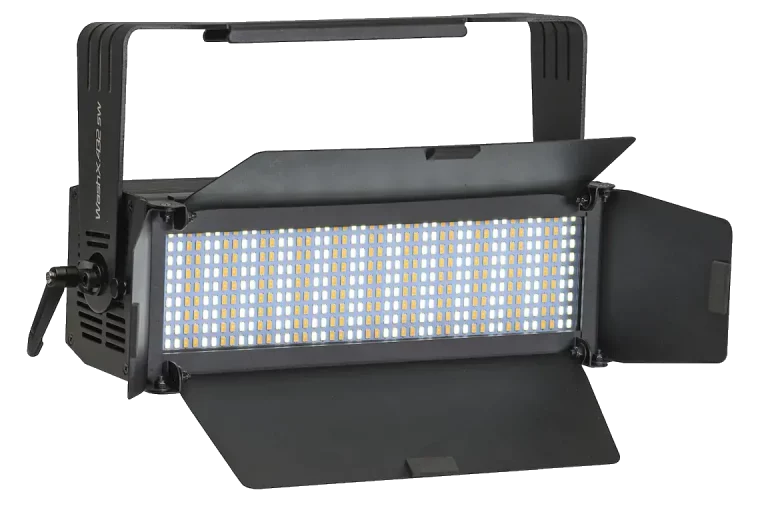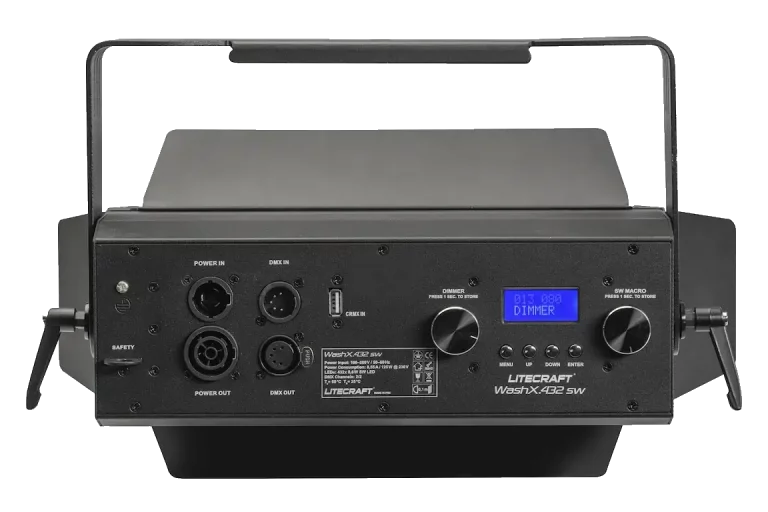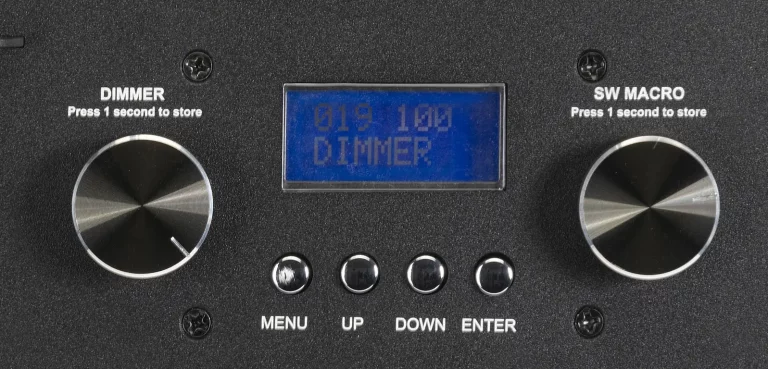Spotlight Washlight Litecraft WashX.432 sw
Litecraft delivers with the WashX.432 sw a new LED-based washlight, which has been developed especially, but not only, for trade show construction and equipped accordingly.
Versatile Flood/Blinder/Strobe Floodlight
The device has a total of 432 LEDs, half of which are divided into cool white and warm white LEDs. This allows the device to flexibly adjust the color temperature at any time in the range between 3,000 and 6,400 Kelvin.
The selection of the appropriate color temperature and the respective macros has been made particularly simple for every conceivable application. The classic booth builder, who usually likes to do without DMX, can adjust and save both the color temperature and the brightness via the two JogWheels on the back of the unit. Regardless of whether the device is switched on and off every day or travels to a trade show – after switching on, the previously set values are directly available. The display gives the user feedback on the macro and brightness so that the setting can be kept the same even with many devices. An adjustment is possible at any time via the JogWheel and can be saved with one press.
In event technology, where DMX 512 is standard, one likes to remain flexible and can quickly adapt each device to the desired situation. Here, the XLR connectors in 5-pin design provide secure connectivity. And if wiring is ever difficult to implement, the optional LUMENRADIO CRMX module can be plugged into the back of the unit and used directly.
The DMX modes and also all other setting options have been deliberately reduced. In addition to the start address, the selection of two DMX modes is possible – on the one hand color temperature macros and brightness, and alternatively the separate control of the cool white and warm white LEDs.
The many LEDs in the WashX.432 sw naturally want to be cooled accordingly. The active and temperature-controlled cooling develops almost no background noise, which makes the device the perfect partner for installation in noise-sensitive environments. Further equipment naturally includes barndoors as well as a color filter frame for diffusion filters or classic color filters, for example.
As far as the connectivity of the device is concerned, the simple cabling via powerIP input and output is highly appreciated, especially in the field of exhibition stand construction. The unsightly wiring by means of multiple sockets (which are located in the visible area, especially at smaller exhibition stands) is no longer necessary.
- Color temperature adjustable from 3000 - 6000 K
- Beam angle: 120
- Color temperature macros preprogrammed
- Manual adjustment of brightness and color temperature via JogWheel
- Memory for last operating state
- optional Lumenradio CRMX module sold separately
- Control: Master/Slave, Stand-Alone and DMX Mode
- Number of DMX channels: 2/2
- DMX connector: 5-pin XLR In/Output
- Protection class: IP20
- incl. powerCON True1 connection cable, color filter frame and 4-leaf barndoor
| Angabe | Wert |
|---|---|
| Hersteller | Litecraft |
| Bezeichnung | WashX.432 sw |
| Leuchtmittel | 432x Multichip LEDs |
| Farbtemperatur | 3000 – 6000 K |
| max. Lichtstrom | 4860 Lux auf 3 m |
| Abstrahlwinkel | 120° (Einschub für optional LS-Filter) |
| Menü-Display | LCD 8-stellig, 2-zeilig |
| Schutzklasse | IP20 |
| Gehäusefarbe | schwarz |
| Leistungsaufnahme | 130 W |
| Gewicht | 3,5 Kg |
| Abmessungen | 370 x 113 x 227 mm (BxTxH) |
| Modellbezeichnung | WashX.432 sw |
